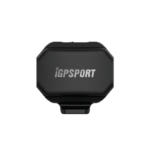WHADDA WPSE347 IR Speed Sensor Module User Manual

Introduction
Safety Instructions
 |
Read and understand this manual and all safety signs before using this appliance. |
 |
For indoor use only. |
General Guidelines
| · Refer to the Velleman® Service and Quality Warranty on the last pages of this manual. |
| · All modifications of the device are forbidden for safety reasons. Damage caused by user modifications to the device is not covered by the warranty. |
| · Only use the device for its intended purpose. Using the device in an unauthorized way will void the warranty. |
| · Damage caused by disregard of certain guidelines in this manual is not covered by the warranty and the dealer will not accept responsibility for any ensuing defects or problems. |
| · Nor Velleman Group nv nor its dealers can be held responsible for any damage (extraordinary, incidental or indirect) – of any nature (financial, physical…) arising from the possession, use or failure of this product. |
| · Keep this manual for future reference. |
What is Arduino®
Arduino® is an open-source prototyping platform based on easy-to-use hardware and software. Arduino® boards are able to read inputs – light-on sensor, a finger on a button or a Twitter message – and turn it into an output – activating of a motor, turning on an LED, publishing something online. You can tell your board what to do by sending a set of instructions to the microcontroller on the board. To do so, you use the Arduino programming language (based on Wiring) and the Arduino® software IDE (based on Processing). Additional shields/modules/components are required for reading a twitter message or publishing online. Surf to www.arduino.cc for more information.
Product Overview
| General |
| The WPSE347 is a LM393 speed sensor module, widely used in motor speed detection, pulse count, position control, etc. |
| The sensor is very easy to operate: To measure the speed of a motor, make sure the motor has a disk with holes. Each hole should be equally spaced on the disk. Every time the sensor sees a hole, it creates a digital pulse on the D0 pin. This pulse goes from 0 V to 5 V and is a digital TTL signal. If you capture this pulse on a development board and calculate the time between the two pulses, you can determine the revolutions speed: (time between pulses x 60)/number of holes. |
| For example, if you have one hole in the disk and the time between two pulses is 3 seconds, you have a revolutions speed of 3 x 60 = 180 rpm. If you have 2 holes in the disk, you have a revolutions speed of (3 x 60/2) = 90 rpm. |
Overview
|
VCC: module power supply from 3.0 to 12 V. |
| GND: ground. |
| D0: digital signal of the output pulses. |
| A0: analogue signal of the output pulses. Output signal in real-time (usually not used). |
Specifications
| · working voltage: 3.3-5 VDC |
| · groove width: 5 mm |
| · weight: 8 g |
| · dimensions: 32 x 14 x 7 mm (1.26 x 0.55 x 0.27″) |
Features
| · 4-pin connector: analogue out, digital out, ground, VCC |
| · LED power indicator |
| · LED indicator of the output pulses at D0 |
Connection
 If the WPSE347 is used close to a DC motor, it may pick-up interferences with as result more pulses on DO as there really are. In this case use a ceramic capacitor with a value between 10 and 100 nF between DO and GND (debounce). This capacitor should be as close as possible to the WPI437.
If the WPSE347 is used close to a DC motor, it may pick-up interferences with as result more pulses on DO as there really are. In this case use a ceramic capacitor with a value between 10 and 100 nF between DO and GND (debounce). This capacitor should be as close as possible to the WPI437.
Testing Sketch
| const int sensorPin = 2; // PIN 2 has been used as input |
| void setup() { |
| Serial.begin(9600); |
| pinMode(sensorPin , INPUT); |
| } |
| void loop(){ |
| int value = 0; |
| value = digitalRead(sensorPin ); |
| if (value == LOW) { |
| Serial.println(“Active”); |
| } |
| if (value == HIGH) { |
| Serial.println(“No-Active”); |
| } |
| delay(1000); |
| } |
| The result in the serial monitor: |
Read More About This Manual & Download PDF:
Documents / Resources
 |
WHADDA WPSE347 IR Speed Sensor Module [pdf] User Manual WPSE347 IR Speed Sensor Module, WPSE347, IR Speed Sensor Module, Speed Sensor Module, Sensor Module, Module |









